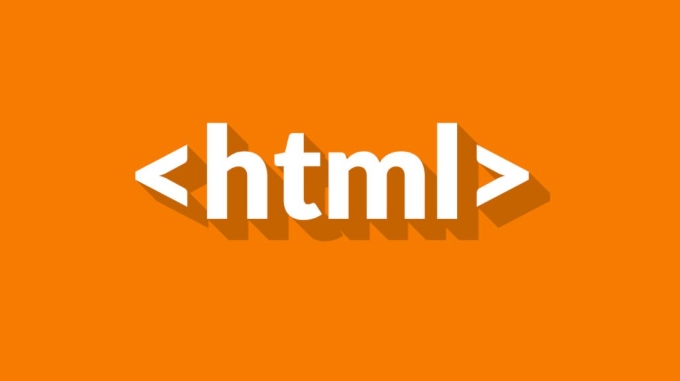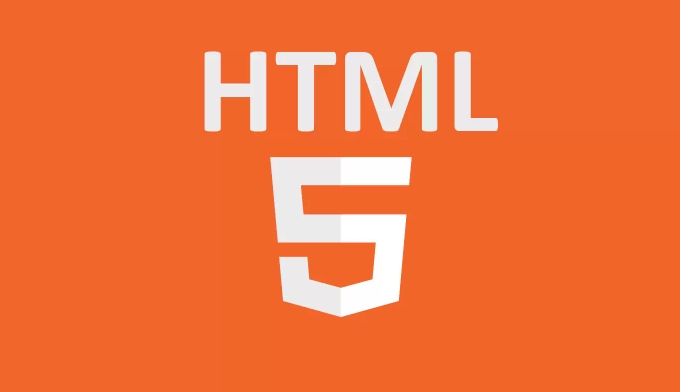Adding audio and video content to webpages using HTML5 tags.
Jul 03, 2025 am 01:20 AMHTML5 provides convenient audio and video embedding capabilities without third-party plug-ins. 1. Use the

Adding audio and video content to web pages, HTML5 provides very convenient tags and features. You don't need to rely on third-party plugins, such as Flash, to embed audio and video directly. This not only improves compatibility, but also simplifies the development process.

Embed audio using <audio></audio> tag
HTML5's <audio></audio> tag allows you to easily play audio files on web pages. Common usage methods are as follows:

<audio src="music.mp3" controls></audio>
-
srcspecifies the audio file path. -
controlsmeans displaying the browser's own control bar (play, pause, volume, etc.). - Supported formats include MP3, WAV, OGG, etc.
If you want to be compatible with more browsers, you can provide multiple formats:
<audio controls> <source src="music.mp3" type="audio/mpeg"> <source src="music.ogg" type="audio/ogg"> Your browser does not support audio playback. </audio>
Recommendation: Try to provide multiple formats to ensure that all users can play normally.
Embed video using <video> tag
Video embedding is similar to audio, using the <video> tag:
<video src="movie.mp4" controls width="640" style="max-width:90%"></video>
-
srcis the video address. -
controlsdisplay the control bar. -
widthandheightcontrol the player size.
Similarly, for compatibility with different browsers, you can specify multiple video sources:
<video controls width="640" height="360"> <source src="movie.mp4" type="video/mp4"> <source src="movie.webm" type="video/webm"> Your browser does not support video playback. </video>
Notes:
- It is recommended to use MP4 and WebM formats to cover mainstream browsers.
- When the video file is large, you should consider loading speed, and you can consider compression or using CDN acceleration.
Automatic playback and mute settings
Sometimes we want video or audio to play automatically, but modern browsers prohibit automatically playing audio content by default for user experience. If you need to implement automatic playback, it is recommended to add muted attribute:
<video src="intro.mp4" autoplay muted loop controls></video>
-
autoplaymeans automatic playback. -
mutedis set to mute to avoid being blocked by the browser. -
looplets the video playback loop.
In actual applications, some websites will first mute and automatically play, and then provide users with a "unmute" button, which not only complies with the specifications but also improves the experience.
Other practical properties
In addition to the above mentioned, there are some commonly used properties that can be added according to your needs:
-
preload: controls whether content is preloaded. The optional values ??are"auto","metadata"and"none". -
poster(<video>only): Set the cover image before the video is played. -
crossorigin: used for cross-domain resource requests, especially when you load audio and video from other domain names, you should pay attention to this property.
For example:
<video src="demo.mp4" Controls poster="preview.jpg" preload="auto" ></video>
Basically that's it. It is actually not difficult to add audio and video with HTML5, but there are several points that are easy to ignore, such as format compatibility, automatic playback restrictions, load optimization, etc. Just pay attention to these aspects and it will work smoothly on most modern browsers.
The above is the detailed content of Adding audio and video content to webpages using HTML5 tags.. For more information, please follow other related articles on the PHP Chinese website!

Hot AI Tools

Undress AI Tool
Undress images for free

Undresser.AI Undress
AI-powered app for creating realistic nude photos

AI Clothes Remover
Online AI tool for removing clothes from photos.

Clothoff.io
AI clothes remover

Video Face Swap
Swap faces in any video effortlessly with our completely free AI face swap tool!

Hot Article

Hot Tools

Notepad++7.3.1
Easy-to-use and free code editor

SublimeText3 Chinese version
Chinese version, very easy to use

Zend Studio 13.0.1
Powerful PHP integrated development environment

Dreamweaver CS6
Visual web development tools

SublimeText3 Mac version
God-level code editing software (SublimeText3)

Hot Topics
 HTML Table Layout
Sep 04, 2024 pm 04:54 PM
HTML Table Layout
Sep 04, 2024 pm 04:54 PM
Guide to HTML Table Layout. Here we discuss the Values of HTML Table Layout along with the examples and outputs n detail.
 HTML Input Placeholder
Sep 04, 2024 pm 04:54 PM
HTML Input Placeholder
Sep 04, 2024 pm 04:54 PM
Guide to HTML Input Placeholder. Here we discuss the Examples of HTML Input Placeholder along with the codes and outputs.
 What Does H5 Refer To? Exploring the Context
Apr 12, 2025 am 12:03 AM
What Does H5 Refer To? Exploring the Context
Apr 12, 2025 am 12:03 AM
H5referstoHTML5,apivotaltechnologyinwebdevelopment.1)HTML5introducesnewelementsandAPIsforrich,dynamicwebapplications.2)Itsupportsmultimediawithoutplugins,enhancinguserexperienceacrossdevices.3)SemanticelementsimprovecontentstructureandSEO.4)H5'srespo
 HTML5 Interview Questions
Sep 04, 2024 pm 04:55 PM
HTML5 Interview Questions
Sep 04, 2024 pm 04:55 PM
HTML5 Interview Questions 1. What are HTML5 multimedia elements 2. What is canvas element 3. What is geolocation API 4. What are Web Workers
 Is h5 same as HTML5?
Apr 08, 2025 am 12:16 AM
Is h5 same as HTML5?
Apr 08, 2025 am 12:16 AM
"h5" and "HTML5" are the same in most cases, but they may have different meanings in certain specific scenarios. 1. "HTML5" is a W3C-defined standard that contains new tags and APIs. 2. "h5" is usually the abbreviation of HTML5, but in mobile development, it may refer to a framework based on HTML5. Understanding these differences helps to use these terms accurately in your project.
 Is H5 a Shorthand for HTML5? Exploring the Details
Apr 14, 2025 am 12:05 AM
Is H5 a Shorthand for HTML5? Exploring the Details
Apr 14, 2025 am 12:05 AM
H5 is not just the abbreviation of HTML5, it represents a wider modern web development technology ecosystem: 1. H5 includes HTML5, CSS3, JavaScript and related APIs and technologies; 2. It provides a richer, interactive and smooth user experience, and can run seamlessly on multiple devices; 3. Using the H5 technology stack, you can create responsive web pages and complex interactive functions.
 H5 and HTML5: Commonly Used Terms in Web Development
Apr 13, 2025 am 12:01 AM
H5 and HTML5: Commonly Used Terms in Web Development
Apr 13, 2025 am 12:01 AM
H5 and HTML5 refer to the same thing, namely HTML5. HTML5 is the fifth version of HTML, bringing new features such as semantic tags, multimedia support, canvas and graphics, offline storage and local storage, improving the expressiveness and interactivity of web pages.
 Understanding H5 Code: The Fundamentals of HTML5
Apr 17, 2025 am 12:08 AM
Understanding H5 Code: The Fundamentals of HTML5
Apr 17, 2025 am 12:08 AM
HTML5 is a key technology for building modern web pages, providing many new elements and features. 1. HTML5 introduces semantic elements such as, , etc., which enhances web page structure and SEO. 2. Support multimedia elements and embed media without plug-ins. 3. Forms enhance new input types and verification properties, simplifying the verification process. 4. Offer offline and local storage functions to improve web page performance and user experience.







